Moderate solar activity, new sunspots, coronal hole
Wednesday, 28 January 2015 12:06 UTC
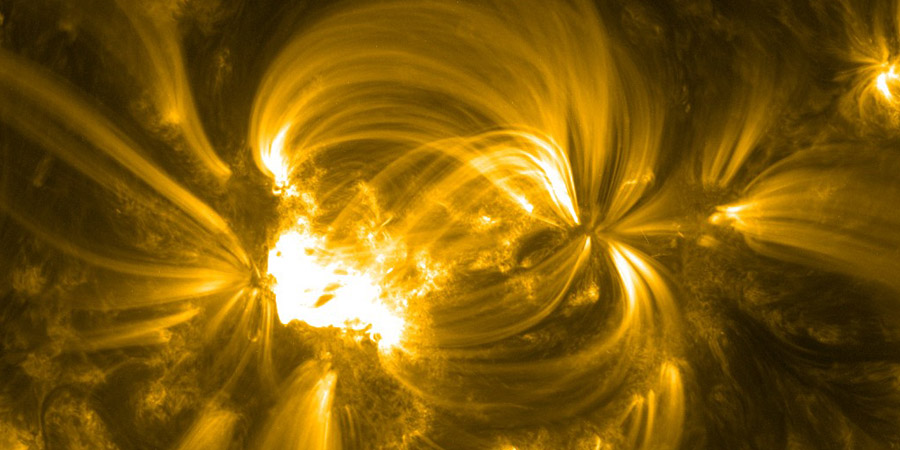
Solar activity increased to moderate levels thanks to an M1.4 solar flare (R1-moderate) peaking at 04:41 UTC from sunspot region 2268. This solar flare was not eruptive and no coronal mass ejection was launched. Can we expect more flares in the days ahead and how about the geomagnetic conditions?
Moderately strong M1.46 solar #flare from #sunspot region 12268 - Follow live on http://t.co/8JIfkaXUPc pic.twitter.com/GzQJBEkMu8
— SpaceWeatherLive (@_SpaceWeather_) 28 januari 2015
Sunspot region 2268
We start with sunspot region 2268 which is by far the most interesting sunspot region on the earth-facing disk. While it has no clear delta structures, it does have a decent amount of magnetic mixing among the trailing sunspots which is where most of the solar flares are taking place.
It is worth noting that this sunspot region is now directly facing Earth, meaning that any future eruptions from this sunspot region could be directed towards Earth. More low-level M-class (R1) solar flares are possible. Stronger solar flares are unlikely unless one or more delta sunspots start to form.
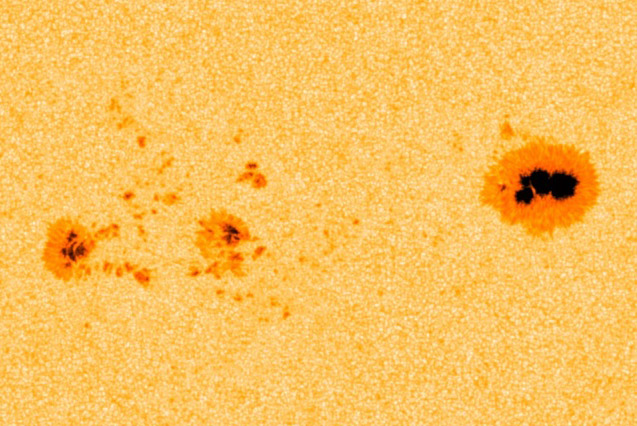
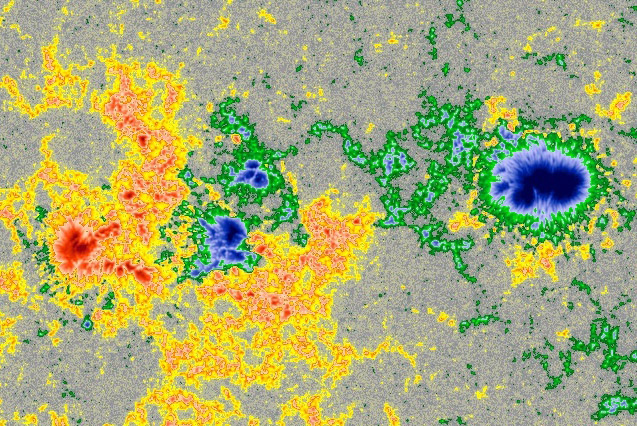
M-class flare probability for the coming 24 hours: 35% chance
X-class flare probability for the coming 24 hours: 5% chance
All the other sunspot regions (with the exception of one, see below) on the earth-facing disk have simple magnetic layouts and are unlikely to produce strong solar flares. Solar activity will likely be low (C-class) to moderate (R1) in the coming days.
New sunspot region
Another sunspot region which might be worth keeping an eye on has just rotated on to the earth-facing disk. While it seems to be surrounded by faculae which can indicate that this sunspot region is in decay, this sunspot region was the source of multiple C-class solar flares during the past days. While this sunspot region is not a threat yet for earth-directed eruptions, it should be monitored for future solar flares and spot development.
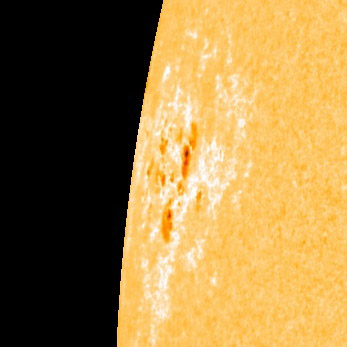
Coronal hole influences
Earth remains under the influence of a solar wind stream coming from the southern polar coronal hole. Geomagnetic conditions are low to unsettled (Kp3 max) which is enough to kick of some nice auroral displays at high latitude locations like in Canada where Zack-Splaine-Photography took this amazing image:
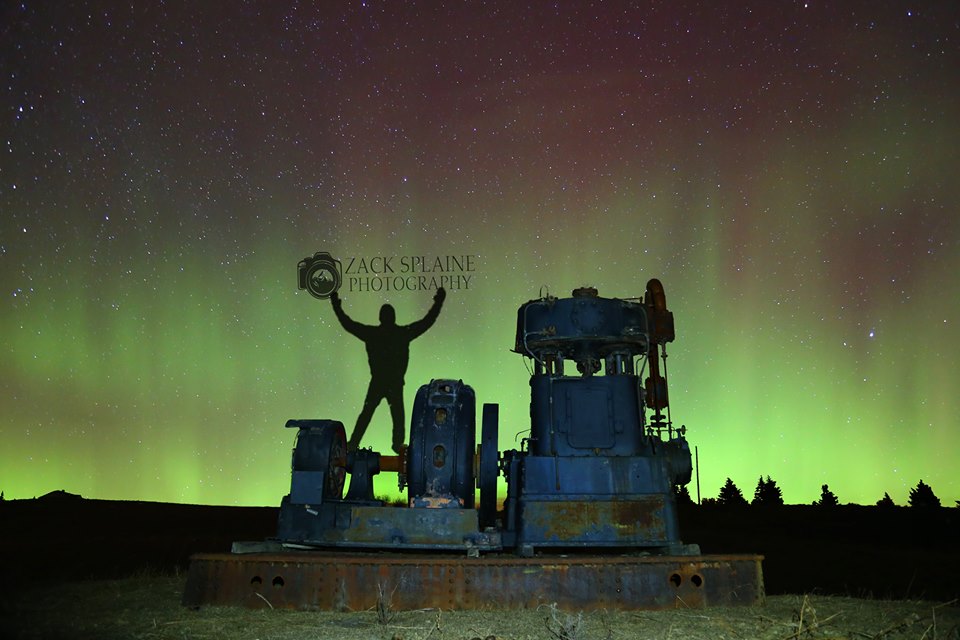
Could there be more aurora in store for us this week? Yes! There are no coronal mass ejections heading towards Earth but the coronal holes do not disappoint this solar maximum.
A northward extending portion of the large polar southern hemishere coronal hole is now rotating into a geo-effective position which means we will likely continued to see elevated solar wind conditions in the days ahead. It will however still take at least 5 more days before solar wind streaming from the northward extension reaches Earth. Unsettled (Kp3) to active (Kp4) geomagnetic conditions remain possible as long as this southern polar coronal hole faces Earth.
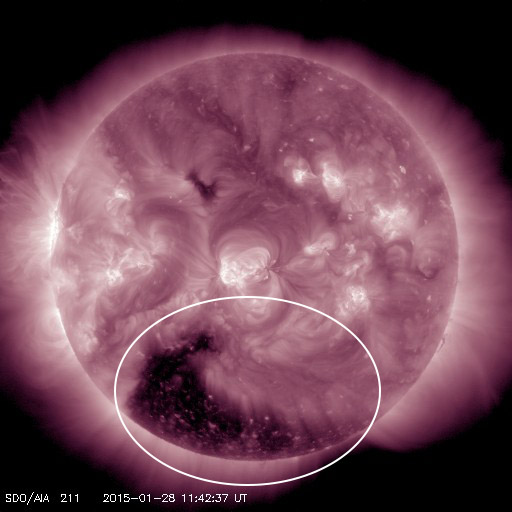
Thank you for reading this article! Did you have any trouble with the technical terms used in this article? Our help section is the place to be where you can find in-depth articles, a FAQ and a list with common abbreviations. Still puzzled? Just post on our forum where we will help you the best we can!
Latest news
Latest forum messages
Support SpaceWeatherLive.com!
A lot of people come to SpaceWeatherLive to follow the Sun's activity or if there is aurora to be seen, but with more traffic comes higher server costs. Consider a donation if you enjoy SpaceWeatherLive so we can keep the website online!

Space weather facts
| Last X-flare | 2025/03/28 | X1.1 |
| Last M-flare | 2025/04/22 | M1.3 |
| Last geomagnetic storm | 2025/04/21 | Kp5+ (G1) |
| Spotless days | |
|---|---|
| Last spotless day | 2022/06/08 |
| Monthly mean Sunspot Number | |
|---|---|
| March 2025 | 134.2 -20.4 |
| April 2025 | 124.6 -9.6 |
| Last 30 days | 122.9 -6.2 |


